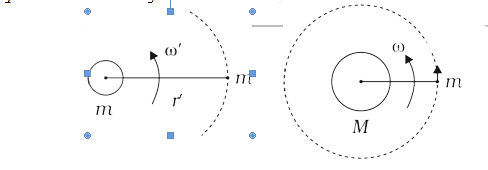A satellite can be in a geostationary orbit around earth in an orbit of radius r. If the angular velocity of earth about its axis doubles, a satellite can now be in a geostationary orbit aroun earth radius
A
r2
B
r2√2
C
r(4)1/3
D
r(2)1/3
Video Solution
Text Solution
The correct Answer is:C
For a geostationary orbit the angular velocity of satellite and earth must be same
From second law,
GMmr2=mω2r⇒r3=GMω2
Now , ω'=2ω
And GMmr'2=mω'2r'
⇒r'3=GMω'2=GM(2ω)2=GM4ω2⇒r'3=r34⇒r'=r(4)13

|
Similar Questions
Knowledge Check
A satellite can be in a geostationary orbit around earth at a distance r from the centrer. If the angular velocity of earth about its axis doubles, a satellite can now be in a geostationary orbit around if its distance from the centre is
Ar2Br2√2Cr(4)1/3Dr(2)1/3A satellite can be in a geostationary orbit around earth at a distance r from the centrer. If the angular velocity of earth about its axis doubles, a satellite can now be in a geostationary orbit around if its distance from the centre is
Ar2Br2√2Cr(4)1/3Dr(2)1/3A satellite is orbiting the earth in a circular orbit of radius r. Its
Akinetic energy veries as rBangular momentum varies as r−1Clinear momentum varies as r2Dfrequency of revolution varies as r−3/2
A geostationary satellite revolves around the earth from
View SolutionFor a geostationary satellite orbiting around the earth identify the necessary condition.
View SolutionThe orbital speed of geostationary satellite is around
View SolutionAn earth satellite X is revolving around earth in an orbit whose radius is one - fourth the radius of orbit of a communication satellite . Time period of revolution of X is .
View SolutionVelocity of geostationary satellite relative to the earth is
View Solution
